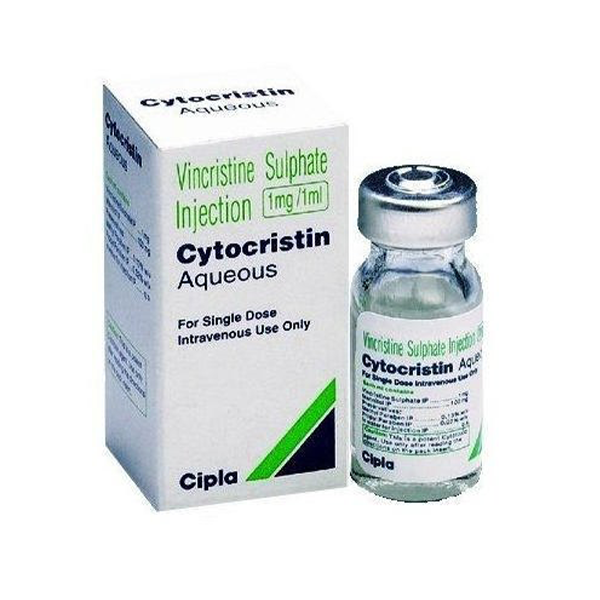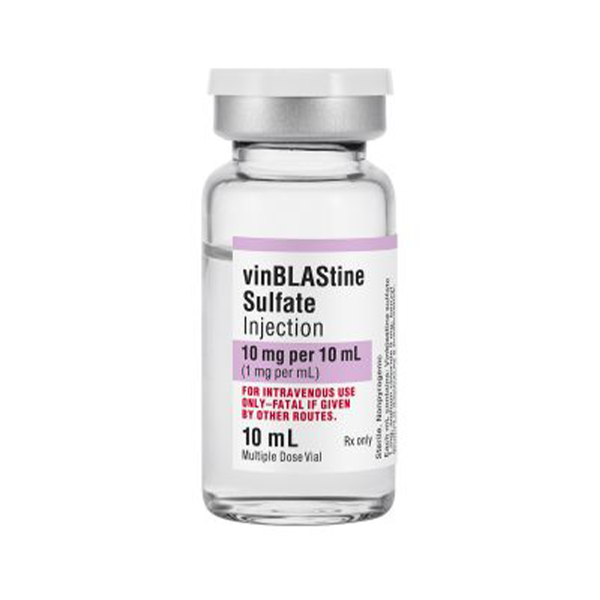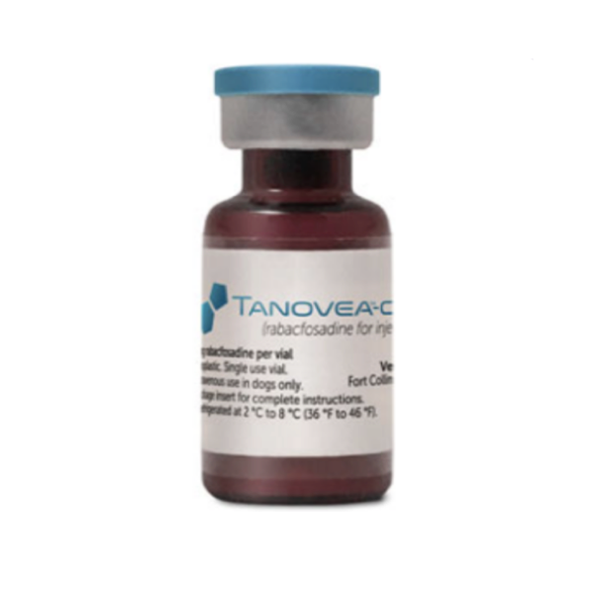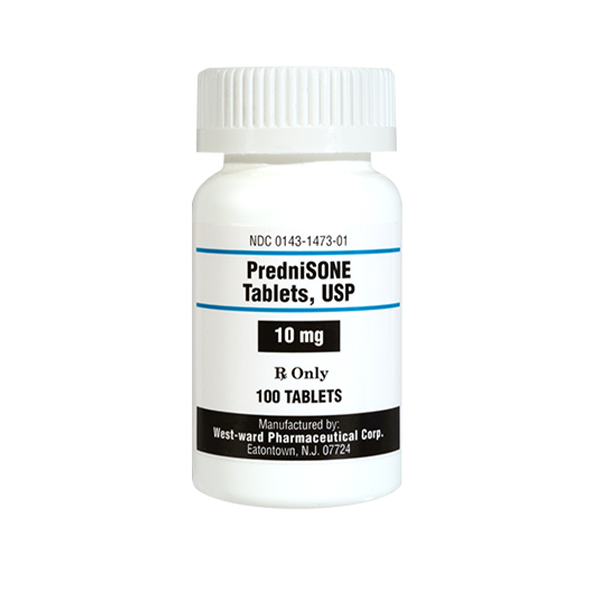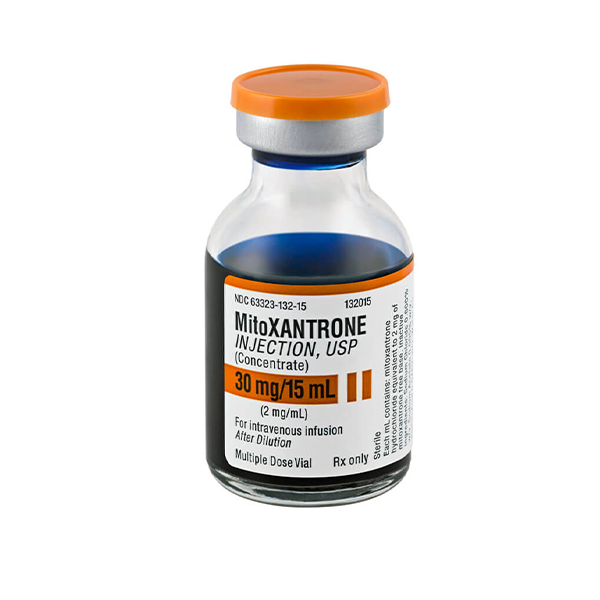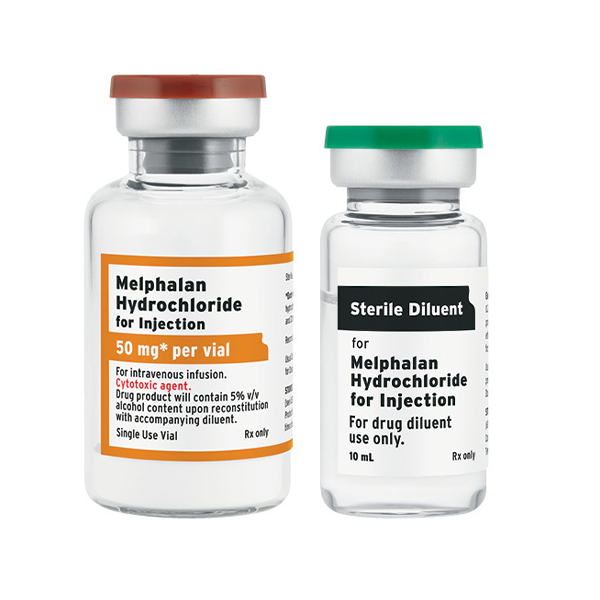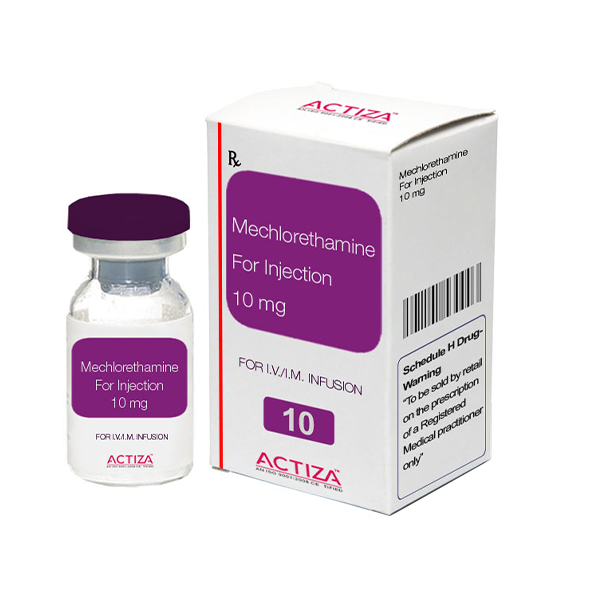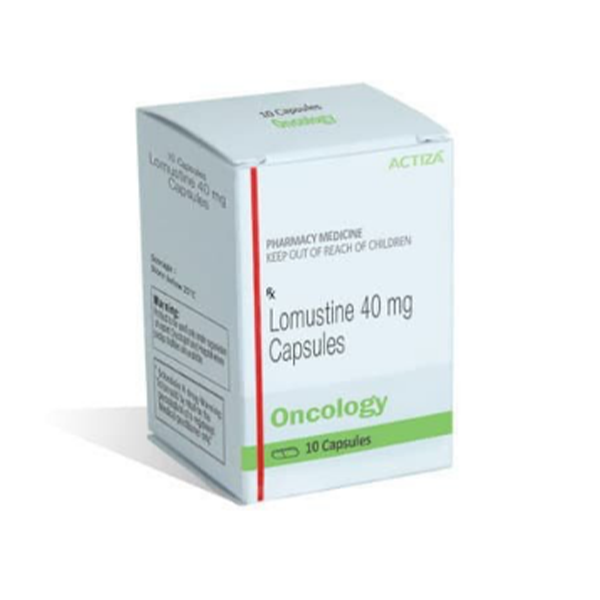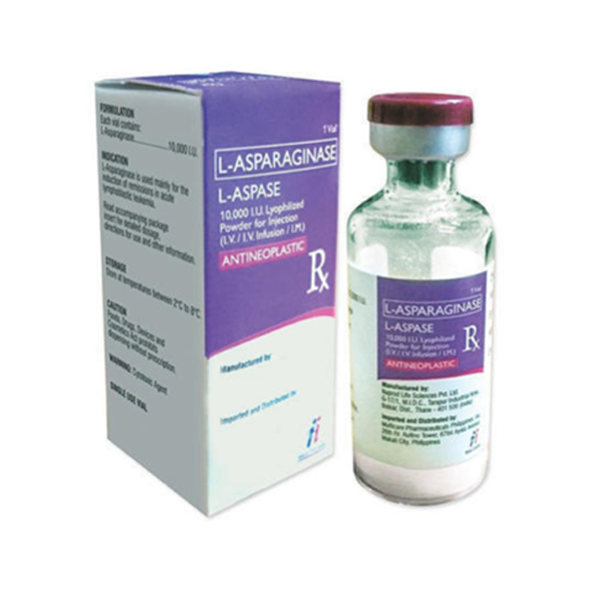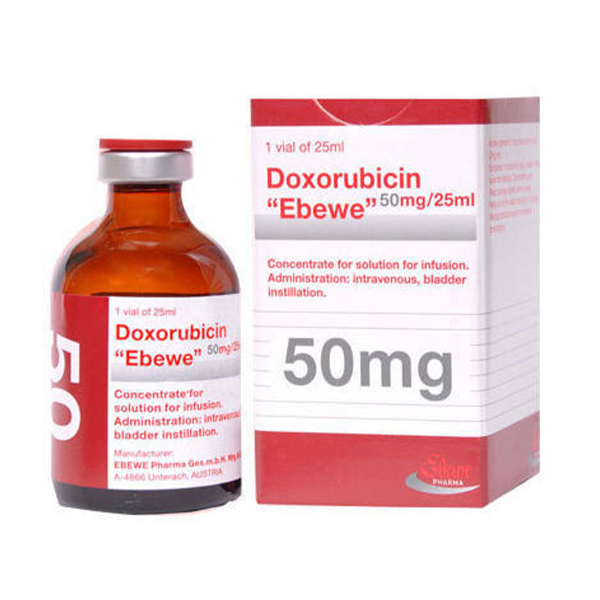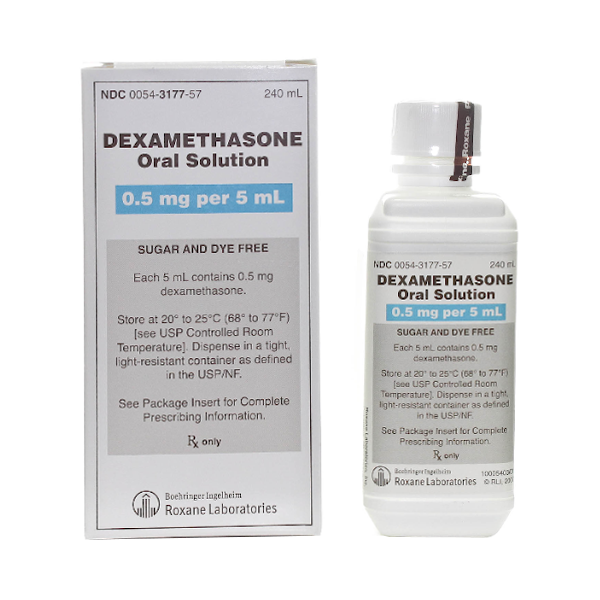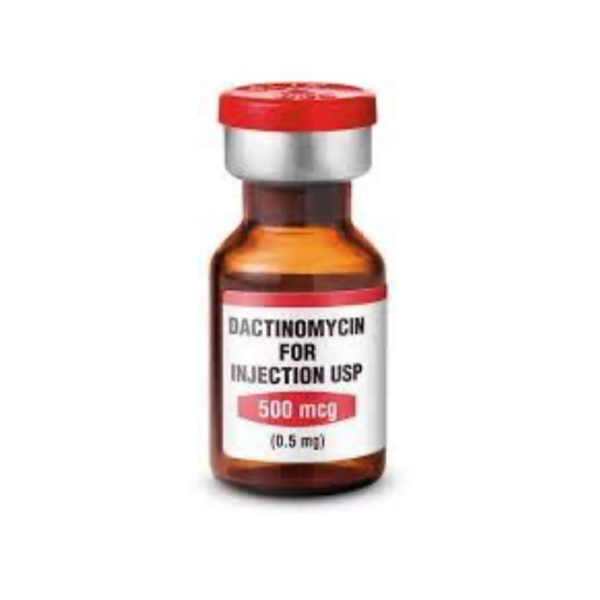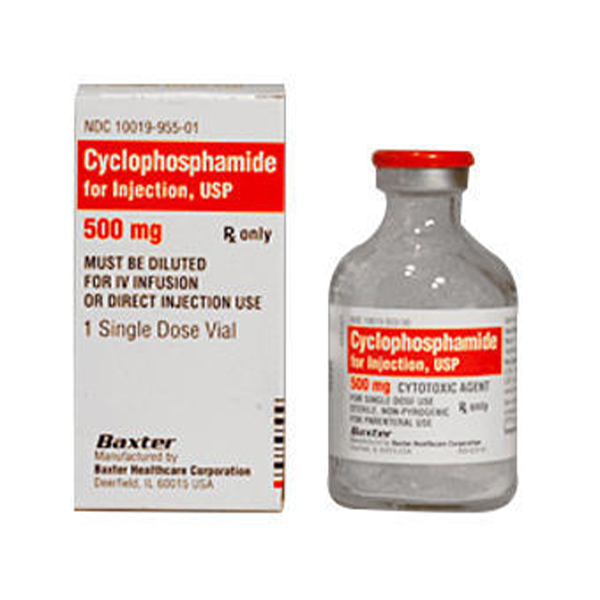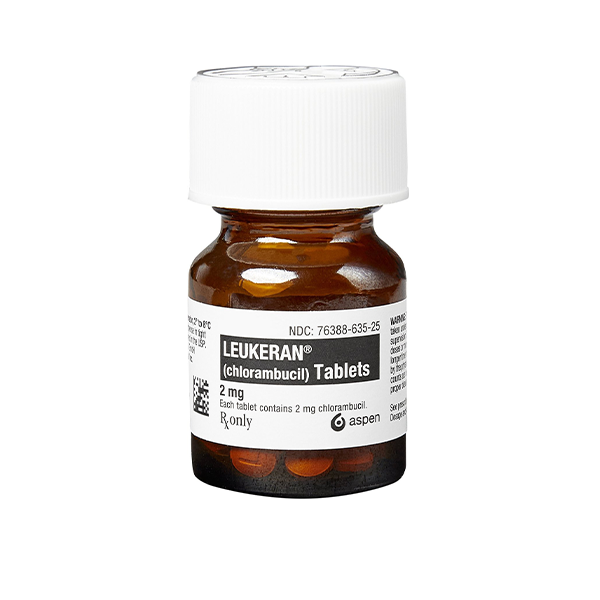Vincristine
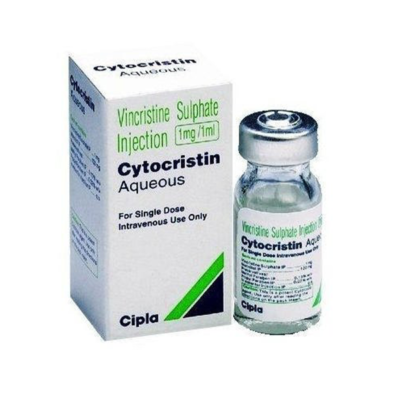
BRAND
Oncovin®, Vincasar® PFS
DRUG TYPE
Anti-cancer chemotherapy drug
CONDITIONS TREATED
Acute leukemia, Hodgkin’s and non- Hodgkin’s lymphoma, neuroblastoma, rhabdomyosarcoma, Ewing’s sarcoma, Wilms’ tumor, multiple myeloma, chronic leukemias, thyroid cancer, brain tumors
ADMINISTRATION
Given through a vein by intravenous injection (IV push) or infusion (IV)
What is Vincristine?
Vincristine is used to treat various types of cancer. It is a cancer chemotherapy drug that is often used with other chemotherapy drugs to slow or stop cancer cell growth.3
What is Chemotherapy?
Drug treatment for cancer is called chemotherapy. The job of chemotherapy is to kill cancer cells, including those that may have spread beyond the main tumor. Unlike surgery or radiation, most types of chemotherapy, or “chemo,” don’t target a particular tumor or a particular part of the body. Most forms of chemotherapy attack all rapidly dividing cells, including cancerous ones. Although cancer cells divide rapidly, other cells do too, including the ones in the lining of your stomach and the ones that grow hair on your head. That’s why chemotherapy patients often lose their hair. Because the drugs affect all types of cells in the body, patients are likely to feel worse after a round of chemotherapy, at least temporarily.5
Use of Vincristine in Dogs
- Neuroblastoma
- Types of Leukemia
- Chronic lymphoid leukemia
- Wilms’ tumor
- Highly malignant tumor of skeletal muscle
- Follicular Lymphoma
- Diffuse Large B-Cell Lymphoma
- Hodgkin’s lymphoma
- Non-Hodgkin’s lymphoma
- Burkitt’s Lymphoma
- Cutaneous T-cell lymphoma
- glioblastoma multiforme
- Mycosis fungoides
- Refractory Ewing’s Sarcoma
- Ewing’s sarcoma
- Ovarian Germ Cell Cancer
- Malignant Glioma
- Small cell cancer of the lung
- Multiple myeloma

Delivery of Vincristine to your pet
- It comes as a solution (liquid), and is given through a vein by intravenous injection (IV push) or infusion (IV).4 There is no pill form.
- It is a vesicant. A vesicant is a chemical that causes extensive tissue damage and blistering if it escapes from the vein. The nurse or doctor who gives vincristine must be carefully trained. If you notice pain, redness or swelling at the IV site while your pet is receiving vincristine sulfate, alert the health care professional immediately.4
- It is usually given once a week. The length of treatment depends on other types of drugs your pet is taking, how well his or her body responds to them, and the type of cancer.2
- If your pet experiences certain side effects, your veterinary oncologist may need to delay treatment or change dose.2 It is important for you to tell your vet how your pet does during treatment with vincristine injection.
- Ask for a list of the ingredients, and tell the vet if your pet is allergic to any.
- Tell your vet what other prescription and nonprescription medications, vitamins and nutritional supplements your pet is taking or planning to take. Be sure to mention any of the following:
- Aprepitant (Emend)
- Antifungals: itraconazole (Sporanox)
- Carbamazepine (Tegretol)
- Clarithromycin (Biaxin, in Prevpac)
- Darifenacin (Enablex)
- Dexamethasone (Decadron)
- Fesoterodine (Toviaz)
- Ketoconazole (Nizoral
- Nefazodone Oxybutynin (Ditropan, Oxytrol)
- Phenobarbital Phenytoin (Dilantin)
- Posaconazole (Noxafil)
- Rifabutin (Mycobutin)
- Rifampin (Rifadin, Rimactane)
- Rifapentine (Priftin)
- Solifenacin (Vesicare)
- Telithromycin (Ketek)
- Trospium (Sanctura)
- Tolterodine (Detrol, Detrol LA)
- Voriconazole (Vfend)
- Do not take aspirin or products containing aspirin unless your doctor permits this.4
- Vincristine should be avoided in pregnant patients.
- Inform your veterinarian if your pet is pregnant or may be pregnant before starting this treatment (vincristine may be hazardous to the fetus)4
- Do not breast feed while taking vincristine.
- Do not have your pet vaccinated without the consent of your vet.1
- Be careful to monitor your pet for signs of infection.
- This medication can make your pet more likely to get infections or may worsen any ongoing infections.
Possible Side Effects:
• Decreased sensation and numbness in fingers and toes may become progressively worse with repeated doses.4 It is important to report to your vet if it appears that your pet may be experiencing these side effects, for example, incessant chewing on their toes.
• If it leaks out of the vein into the surrounding area, vincristine may cause serious skin and tissue damage. Tell your vet immediately if your pet appears to experience pain, irritation, redness, or swelling at the injection site, for example, sensitivity to touch, licking, increased breathing rate or behavioral changes such as intention to bite.
CONTACT YOUR VET IMMEDIATELY IF YOUR PET EXPERIENCES ANY OF THE FOLLOWING
- Hives
- Rash
- Itching
- Difficulty breathing or swallowing
- Constipation
- Increased or decreased urination
- Swelling of face, arms, and lower extremities
- Unusual bleeding or bruising
- Unusual tiredness or weakness
- Pain in extremities
- Difficulty with walking or unsteady walking
- Muscle or joint pain
- Sudden changes in vision, including loss of vision
- Hearing loss
- Dizziness
- Loss of the ability to move muscles
- Hoarseness or loss of ability to bark or vocalize
- Seizures
- Jaw pain
- Fever, redness in throat, or chills
The following symptoms require medical attention, but are not emergency situations. Contact your veterinarian within 24 hours of noticing any of the following:2
- vomiting
- sores in the mouth and throat
- loss of appetite or weight
- hypersensitivity to touch (pain)
- diarrhea
- hair loss
Side effects are almost always reversible and will go away after treatment is complete. Please do not try and make a connection between your dog’s reaction and how well the drug is working, there is no relationship between the presence or severity of side effects and the effectiveness of Vincristine.4
SYMPTOMS of OVERDOSE2
- Seizures
- Severe constipation
- Stomach pain (audible gurgling, excessive gas, eating grass to alleviate discomfort)
- Unusual bleeding or bruising
Drug interactions may change how your pet’s medications work or increase risk for serious side effects. This document does not contain all possible interactions. Keep a list of all the products your pet uses including prescription or nonprescription drugs and herbal products. Be sure to share it with your vet.
Severe interaction with the following drugs:6
- Decadron (dexamethasone)
- Emend (aprepitant)
- Fuconazole
- Methotrexate
- Neulasta (pegfilgrastim)
- Neupogen (filgrastim)
- Phenytoin
- Taxol (paclitaxel)
- Taxotere (docetaxel)
Serious Interaction with the following drugs1,6
- Voriconazole
- Azole antifungals (such as itraconazole)
- Macrolide antibiotics (such as erythromycin)
- Rifamycins (such as rifabutin)
- john’s wort
- Carbamazepine
Do not start, stop, or change the dosage of any medicines without your doctor’s approval.
MYELOSUPPRESSION (low white blood cell count)
- No treatment is routinely given to increase the white blood cells. Your pet’s body will do this on his/her own. It is expected that the white blood cell count will drop in most animals after treatment with certain chemotherapy agents. If a complete blood count (blood test) reveals that the white cell count is very low, antibiotics may be prescribed as a precautionary measure against infection while the bone marrow works to restore normal white blood cell levels.
- If your pet is known to have a low white blood cell count and becomes very lethargic, refuses to eat, begins to vomit or have diarrhea, or appears ill to you, first take his/her temperature with a standard rectal thermometer if you can. A digital thermometer often works best. Normal temperature in dogs is 100-102.5 ℉. If the temperature is greater than 103 ℉ or below 99 ℉, call the hospital immediately. A fever with a low white blood cell count is an emergency and your pet may need to be hospitalized for intravenous fluids and antibiotics. Without appropriate treatment, an infection can be life-threatening. If you are unable to take your pet’s temperature, please call your vet for advice or bring your pet to a veterinary hospital for evaluation.
LOW PLATELET COUNT
- No treatment is given to increase the platelet count.
- It is rare for low platelet counts due to chemotherapy to cause problems for pets. Nevertheless, if you detect any bruising (purple spots) on your pet’s gums, ears, and skin (typically on the abdomen), call the hospital.
VOMITING
- Take the pet’s temperature. Call the hospital if greater than 103 ℉ or below 99 ℉.
- Withhold food and water for 12 hours, and then offer small amounts of water every 2 hours.
- If your pet does not vomit after drinking water, offer small amounts of bland foods such as boiled, baked, or broiled white chicken or turkey meat, or boiled hamburger (skim off the fat) with boiled white rice. If your pet tolerates small bland meals without vomiting, gradually reintroduce his/her normal diet over about 3 days.
- Call the hospital if the vomiting is severe, is accompanied by a fever, or persists longer than 24 hours.
DIARRHEA
- Withhold food for 12 hours. Continue to provide fresh water.
- Offer your pet bland, easily digestible foods such as boiled chicken or turkey or hamburger and white rice. Gradually reintroduce your pet’s normal diet.
- Call the hospital if the diarrhea persists for more than 48 hours or if it is associated with a rectal temperature above 103 ℉ or below 99 ℉.
DECREASED APPETITE (Anorexia)
- Take your pet’s temperature. Call the hospital if the temperature is above 103 ℉ or below 99 ℉.
- Offer your pet interesting and enticing foods such as chicken, turkey, and hamburger. Also try chicken and lamb baby food (dogs only). Adding broth or yogurt to the food can help increase palatability. Avoid foods that are too fatty or rich as these can cause problems. If you need help tempting your pet to eat, please talk to your veterinarian for more suggestions.
- Call the hospital if anorexia persists for more than 2 days.
LETHARGY
- Allow your pet to rest as much as he/she wants. His/her energy level should return to normal within a couple of days.
- Take your pet’s temperature. Call the hospital if the temperature is above 103 ℉ or below 99 ℉.
- Call the hospital if your pet is too weak to support his/her weight or is unable to walk or is unresponsive.
HAIR LOSS
- Hair is loss is uncommon in most dog breeds that do not require grooming to keep their coats short. However, dogs with continuous hair growth, such as poodles, Bichon frises and some terriers are more prone to this side effect.
- If your pet experiences significant hair loss, a coat may keep your dog more comfortable when outside in cold weather. This can be purchased at a pet store.
SKIN DAMAGE
- Call the doctor to discuss management of the leg.
- Try to keep your pet from licking at the area.
- You may need to wrap the leg or apply an Elizabethan (cone) collar to help prevent your pet from licking at the area.
REFERENCES


